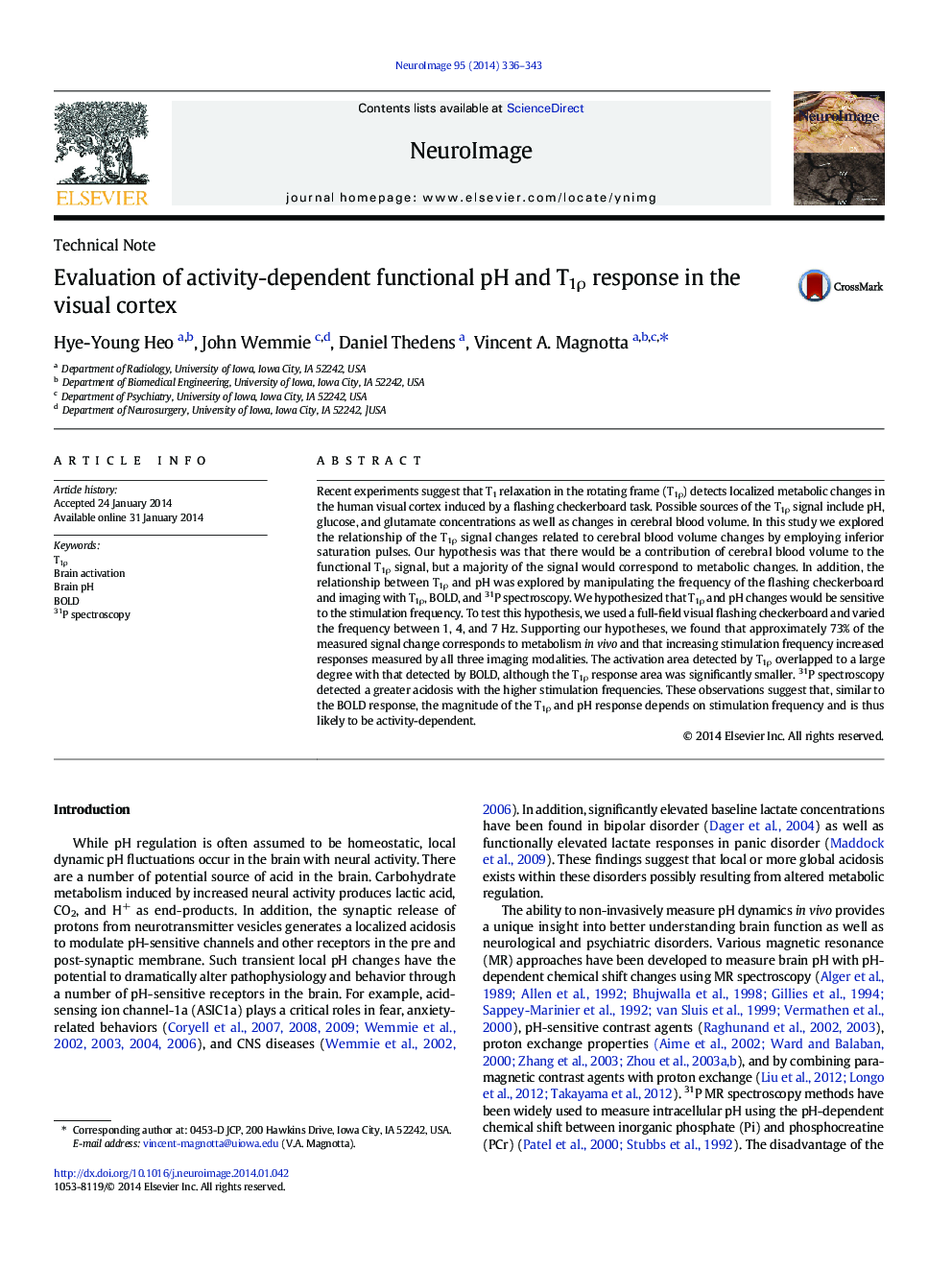| Article ID | Journal | Published Year | Pages | File Type |
|---|---|---|---|---|
| 6026872 | NeuroImage | 2014 | 8 Pages |
â¢Functional T1Ï imaging shows a faster response as compared to BOLD and ASL imaging.â¢Functional T1Ï imaging areas of activation overlap significantly with the BOLD.â¢T1Ï may be a more direct and precise method of imaging brain function.â¢Functional T1Ï imaging may reflect brain metabolic changes.
Recent experiments suggest that T1 relaxation in the rotating frame (T1Ï) detects localized metabolic changes in the human visual cortex induced by a flashing checkerboard task. Possible sources of the T1Ï signal include pH, glucose, and glutamate concentrations as well as changes in cerebral blood volume. In this study we explored the relationship of the T1Ï signal changes related to cerebral blood volume changes by employing inferior saturation pulses. Our hypothesis was that there would be a contribution of cerebral blood volume to the functional T1Ï signal, but a majority of the signal would correspond to metabolic changes. In addition, the relationship between T1Ï and pH was explored by manipulating the frequency of the flashing checkerboard and imaging with T1Ï, BOLD, and 31P spectroscopy. We hypothesized that T1Ï and pH changes would be sensitive to the stimulation frequency. To test this hypothesis, we used a full-field visual flashing checkerboard and varied the frequency between 1, 4, and 7Â Hz. Supporting our hypotheses, we found that approximately 73% of the measured signal change corresponds to metabolism in vivo and that increasing stimulation frequency increased responses measured by all three imaging modalities. The activation area detected by T1Ï overlapped to a large degree with that detected by BOLD, although the T1Ï response area was significantly smaller. 31P spectroscopy detected a greater acidosis with the higher stimulation frequencies. These observations suggest that, similar to the BOLD response, the magnitude of the T1Ï and pH response depends on stimulation frequency and is thus likely to be activity-dependent.
